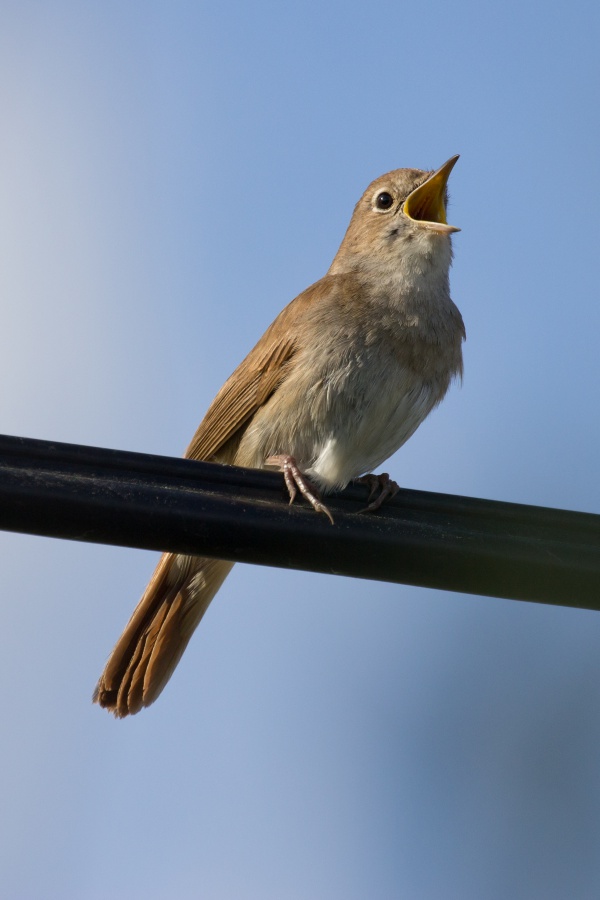Facts About Common nightingale
The common nightingale, also known as the rufous nightingale or simply the nightingale, is a small bird celebrated for its melodious song. Once considered a member of the thrush family, it is now classified with the Old World flycatchers. These birds, often dubbed "chats" are noted for their terrestrial habits. The name "nightingale" derives from the Old English words "night" and "galan" meaning "to sing." Both its genus name, Luscinia, and species name, megarhynchos, underscore its vocal talents.
There are several subspecies of the nightingale, including the western nightingale, Caucasian nightingale, and eastern nightingale. Slightly larger than a European robin, it displays a plain brown upper body, a reddish tail, and buff to white underparts. The nightingale's song is widely regarded as one of nature's most enchanting sounds, inspiring countless works of art.
Nightingales are migratory birds. They breed in Europe and the Palearctic region and spend their winters in Sub-Saharan Africa. They prefer to breed in forests and scrublands, constructing their nests on or near the ground. Although the nightingale faces some conservation challenges, particularly in the UK, the overall European breeding population is estimated to be between 3.2 and 7 million pairs, earning it a green conservation status.
These birds are renowned for their ability to sing both day and night, with males typically performing the loud and varied songs. Throughout history, the nightingale's song has inspired poets and artists, symbolizing creativity, the purity of nature, and the poet's muse. This bird has become a significant cultural symbol in literature, poetry, music, and art.
The nightingale has appeared in a myriad of cultural works, from ancient Greek comedies and Ovid's Metamorphoses to Persian poetry, Middle English poems, and symphonies by Beethoven and Liszt. Its song has inspired composers, writers, and artists across different eras and cultures, making it a timeless muse.

 France
France